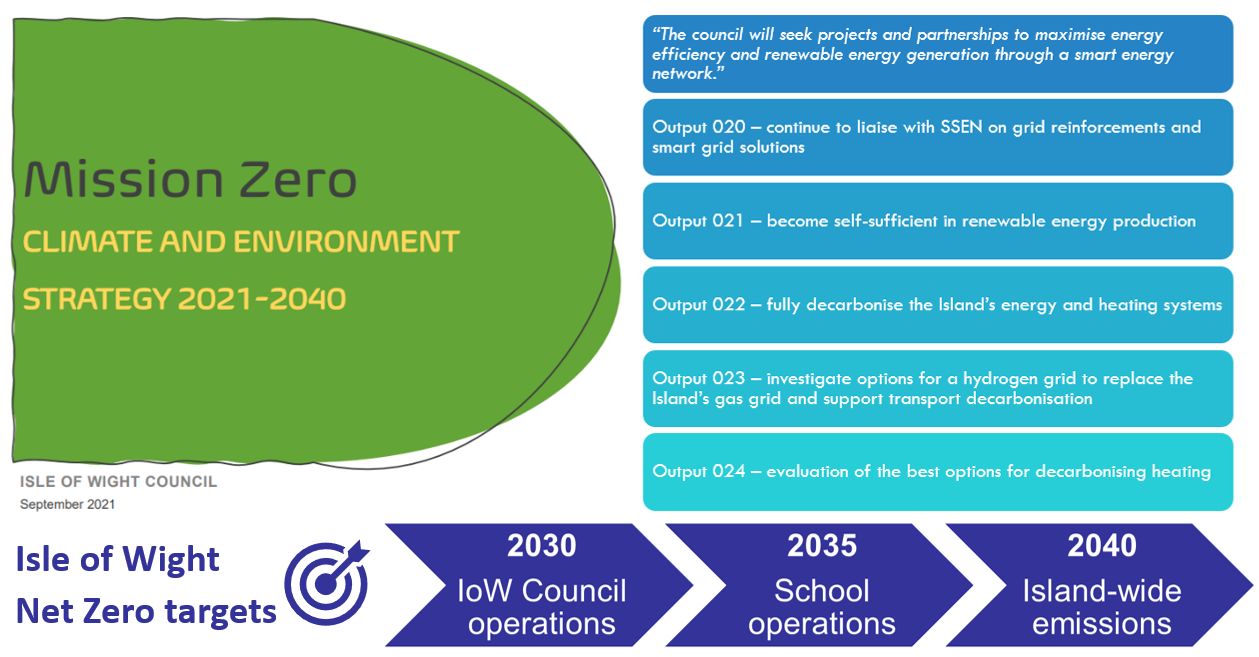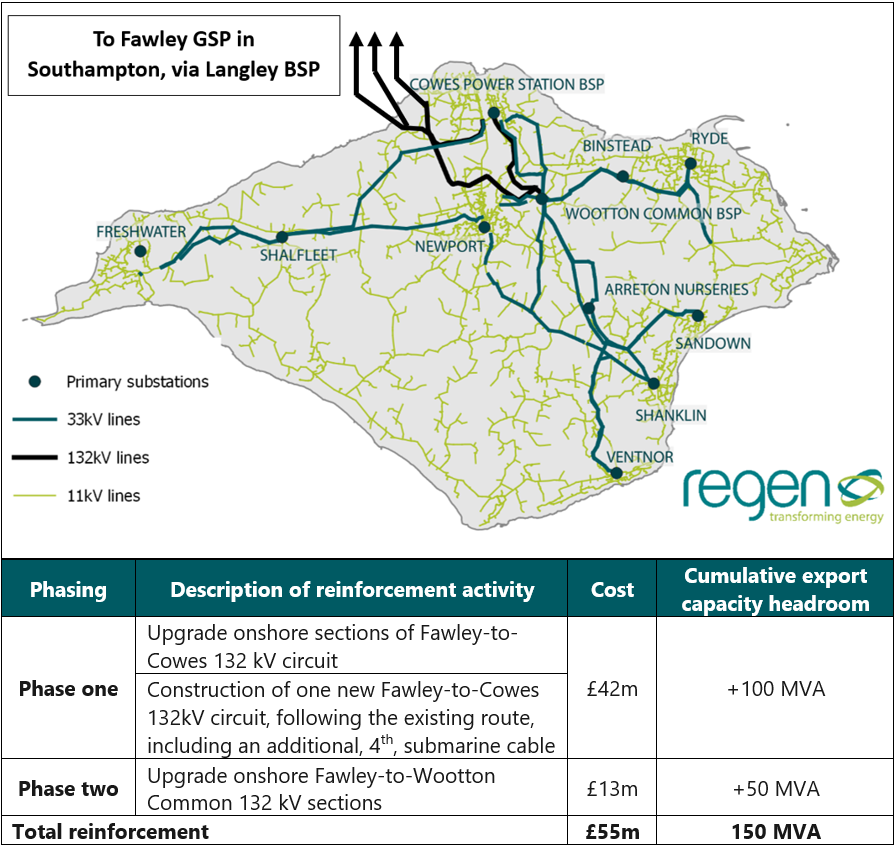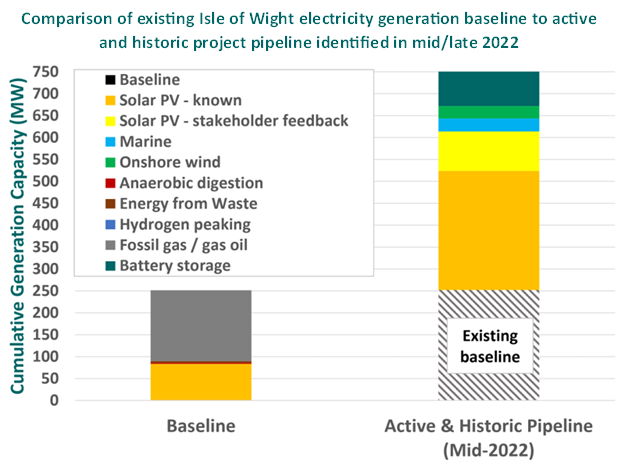Ray Arrell, our Head of Future Energy Systems, shares the outcome of a future load growth study that Regen has been conducting over the past 18 months for the Isle of Wight, and how the evidence collected could lead to significant investment in the island’s electricity network.
Regen has worked with Scottish and Southern Electricity Networks (SSEN) and a wide range of stakeholders to collate evidence for investing in the electricity network that supplies the Isle of Wight. This investment could pave the way to a net zero energy island, with new renewable energy generation and electricity storage projects and a significant electrification of heating, road transport, marine vessels and other sectors.
The project provides an insight into how local councils and networks can work together with stakeholders to understand in detail the evidence for investing in electricity network infrastructure to support the path to net zero in a specific place.
Background
Following a climate emergency declaration in July 2019, in September 2021 the Isle of Wight Council published Mission Zero, a climate and environment strategy for the Island for the period of 2021 to 2040. This strategy set out the Council’s aspirations and targets to achieve net zero carbon for its own operations by 2030 and across the wider Island by 2040, building on analysis that Regen completed for the Isle of Wight Council in 2020.

Figure 1: Isle of Wight net zero targets and outputs
Source and credit: Mission Zero, Isle of Wight Council, September 2021 (link)
However, the island’s electricity network has been constrained on generation for over 10 years, preventing new renewable energy and storage projects from being able to connect without triggering significant and high-cost network reinforcement. Over this time, some network headroom has been created through the implementation of an Active Network Management (ANM) system by the island’s network operator, SSEN. However, this headroom has been quickly consumed and a number of developments (including solar PV and battery projects) have not progressed beyond connection offers or planning applications.
Unlocking generation capacity on the island will require significant network reinforcement at multiple voltages tiers, with new physical infrastructure (substations, circuit breakers, cabling) needed at various points on the island, on the mainland and subsea cabling across the Solent. The estimated cost to release 150 MVA of capacity could be in the region of £55m.

Figure 2: Isle of Wight electricity network map and costs for phased network reinforcement.
Source: SSEN data and Regen analysis
Strategic network reinforcement for the island was not included in SSEN’s RIIO-ED2 plan, due to evidence available at the time. However, to address the challenges presented by the constraints on the island, SSEN committed to a more granular assessment of the potential for electricity load growth on the island, as part of their final business plan. The evidence collated would be used to inform a separate dialogue between SSEN and Ofgem about what could be implemented.
The evidence
The evidence case report produced by Regen is the culmination of this work. The study established a Working Group of representatives from the island and SSEN, and undertook a detailed, accurate review of planned and aspirational growth of electricity demand, generation and storage across the Isle of Wight. This included a deep review of active and historic connection applications with SSEN and planning applications with Isle of Wight Council.
This analysis was supplemented by engaging a number of energy project developers and owner/operators active on the island, asking about their appetite to develop renewable energy projects, should the network constraints be alleviated. There was complete consensus that the Isle of Wight is a really good place to develop renewables and the grid constraints are preventing strong projects in a supportive local authority area from coming forward.

This analysis collated evidence of:
- Up to 500 MW of prospective new renewable generation and battery storage capacity
- Up to 400 MW of potential EV charging capacity, serving 92,000 EV cars, LGVs and the island’s bus fleet
- Additional future shore power capacity requirements, to service the island’s ferry operators and a number of private marine vessels of varying sizes
- Up to 970 MW of heat pumps operating in homes and businesses
- Wider island business decarbonisation strategies that could further increase demand

Figure 3: Graph of current generation baseline, alongside active and historic pipeline of prospective generation projects on the Isle of Wight.
Source: SSEN connection data, Regen analysis
Our conclusion
The evidence is clear – future electricity load growth is very likely to be significant on the island. There is market interest and resource potential for new renewable energy generation, and electricity demand is set to significantly increase through the electrification of road transport, marine transport, space heating and other sources of demand from island businesses.
More work could be done to develop a more detailed picture of some sources of future demand, such as shore power needs for marine vessel electrification, the scale of need for electricity storage and demand side flexibility on the island and a wider view of island business decarbonisation plans. But with the evidence seen, we have recommended that SSEN develop the most cost-effective solution to unlock new generation capacity on the island and to prepare the network for the level of demand electrification that the net zero transition will bring. Enabling the investment to complete the necessary network reinforcement works could:
- Restart the development of solar projects in one of the areas with highest solar irradiance levels in the UK
- Enable residents and businesses to transition to low carbon transport and heating effectively and efficiently, contributing to wider progress towards net zero
- Fast-track the Isle of Wight to be a benchmark for a net zero island community
We will continue to work with SSEN and the Isle of Wight Council as they explore and progress the next steps for the investment case and future network design.
For more information about Regen’s work with electricity networks or future energy systems, please contact Ray Arrell (rarrell@regen.co.uk)
